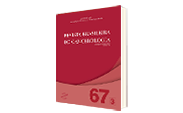Physical Functionality of the Upper Limb after Breast Cancer Surgery in Southern Brazilian Survivors: Cross-Sectional Study
DOI:
https://doi.org/10.32635/2176-9745.RBC.2021v67n3.1168Keywords:
Breast Neoplasms, Mastectomy, Pain, Muscle Strength, Upper Extremity/physiopathologyAbstract
Introduction: Surgical treatment after the diagnosis of breast cancer can lead to several consequences of the survivor’s upper limb. Objective: Analyze the physical function of the upper limb after breast cancer surgery in Southern Brazilian survivors. Method: 82 breast cancer survivors (55±10 years) receiving hormone therapy were included. A questionnaire for general information, pain (Visual Analogue Scale), and upper limb functionality (DASH) were applied, followed by physical tests; the shoulder range of motion (goniometer), strength (dynamometer), proprioception (kinesimeter) and arm volume (perimeter of the arm). Results: No differences were found for any variable of physical function in relation to mastectomy or breast-conserving surgery. However, better scores of strength and the shoulder range of motion were found for the non-surgery arm. Linear regression demonstrated a relation between pain, strength, range of motion, proprioception, and arm volume with the disabilities of the upper limb, and when adjusted by surgery modality, shoulder range of motion, arm volume, and proprioception maintained significantly. Conclusion: Breast cancer survivors presented physical disabilities on the upper limb after surgery, regardless of the modality of surgery. Results elucidate the need for an efficient post-treatment program to prevent poor physical function after breast cancer surgery and provide better daily activities to these women.
Downloads
Downloads
Published
How to Cite
Issue
Section
License
Os direitos morais e intelectuais dos artigos pertencem aos respectivos autores, que concedem à RBC o direito de publicação.

This work is licensed under a Creative Commons Attribution 4.0 International License.









